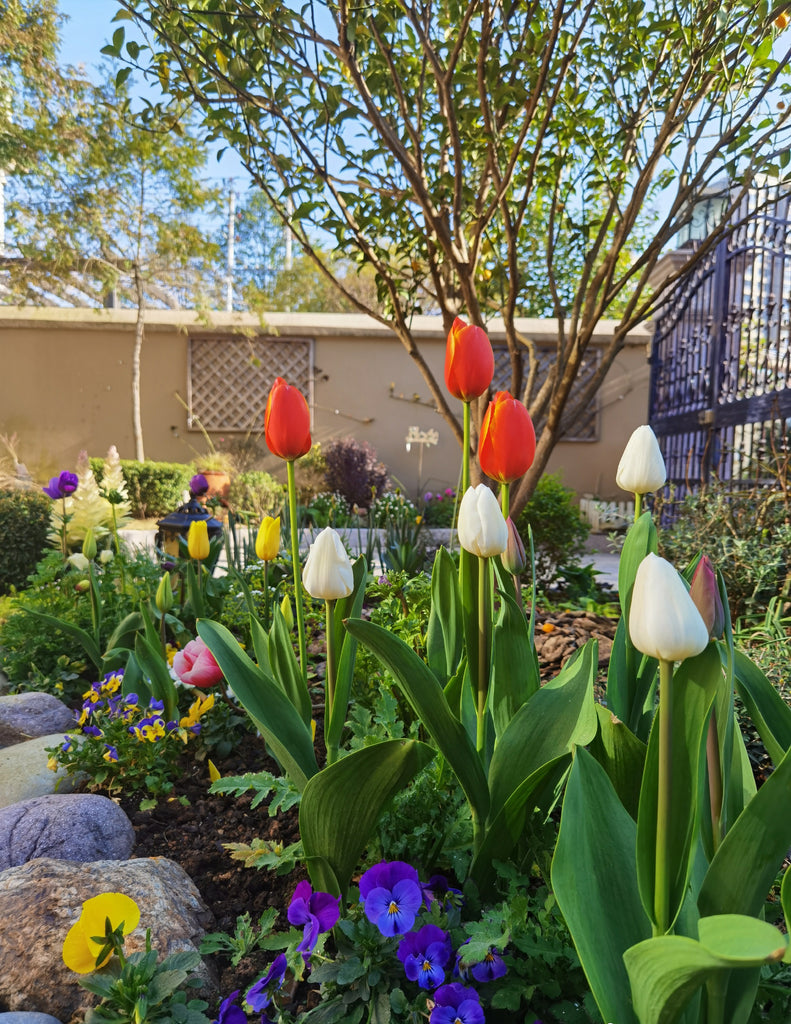By Michael Jenkins

The colder months can be wonderful—winter is a great time for enjoying cozy times at home, complete with hot coco and companionship for the holidays. However, here at Gardzen we’re out to show the world that gardening is a year-round activity, and that there’s always something you can do for your garden or to prepare for the spring to come. As it turns out, planting bulbs in winter is an option many of us have, and it can be a wonderful way to catch up on the garden prep work you didn’t complete in the fall. Planting bulbs in winter can help ensure a beautiful garden when the warm weather arrives, so let’s dig in and learn how it’s done!
Depending on the plant in question, garden bulbs are generally planted in either spring or fall, with an eye towards growth when the weather warms up. While this is generally best practice, you may be comforted to learn that you can in fact plant bulbs in winter with a bit of care. Let’s look at some things to consider before planting bulbs during the winter months:
- Plant when the soil is still workable: frozen soil is almost never good to plant in, so if you’ve already seen a hard freeze resulting in icy, un-diggable ground, it’s probably not the time to plant. If the soil is still workable—you can turn it over with a shovel or spade without undue effort—you’re probably good to go for planting bulbs.
- Dig deep to protect your bulbs from both the cold and from hungry critters looking for a winter snack. Six to eight inches (15-18cm) is generally enough. You may want to check the soil temperature and moisture contentto ensure that your bulbs are going to a safe and welcoming winter home.
- Mulch to further protect the bulbs and their soil. Mulching can help ensure that your bulbs have a bit more protection during the cold weather. A nice layer of mulch keeps the frost off the soil while holding the heat in, helping support your bulbs through their winter dormancy so that they can thrive in the spring. We’ve written about the hows and whys of mulchingelsewhere, so revisit that blog when you get a chance.
- Consider planting bulbs in containers if the ground is frozen hard or of it’s just too nasty outside for you to be happy in your garden. Planting bulbs in containersin winter is a great way to get an easy start on the spring. Bulbs like tulips and narcissus are idea; plant them in containers and then store them in a cold but sheltered place over the winter—an unheated garage, a shed, or an enclosed porch would all be ideal. When growth starts to show, move them to an outdoor space.
- Growing bulbs indoors in winter brings live and color into your home while helping you keep your green thumb active. Follow the same steps as you would for planting bulbs in containers, but keep them in a cool place inside your home and then give them some warmth and light as they start to grown. Amaryllis, narcissus, hyacinth, daffodils—all can do well indoors in containers over the winter!

Gardening is a year-round experience, and by planting bulbs in winter either indoors or outside you’ll stay active as a gardener while further exploring the cycle of the seasons and the natural world around you. So, we’ll ask you a question or two now: have you grown bulbs in winter? Do you have bulbs growing indoors now? We’d love to see them and hear about your experiences, so get in touch today!

Leave a comment